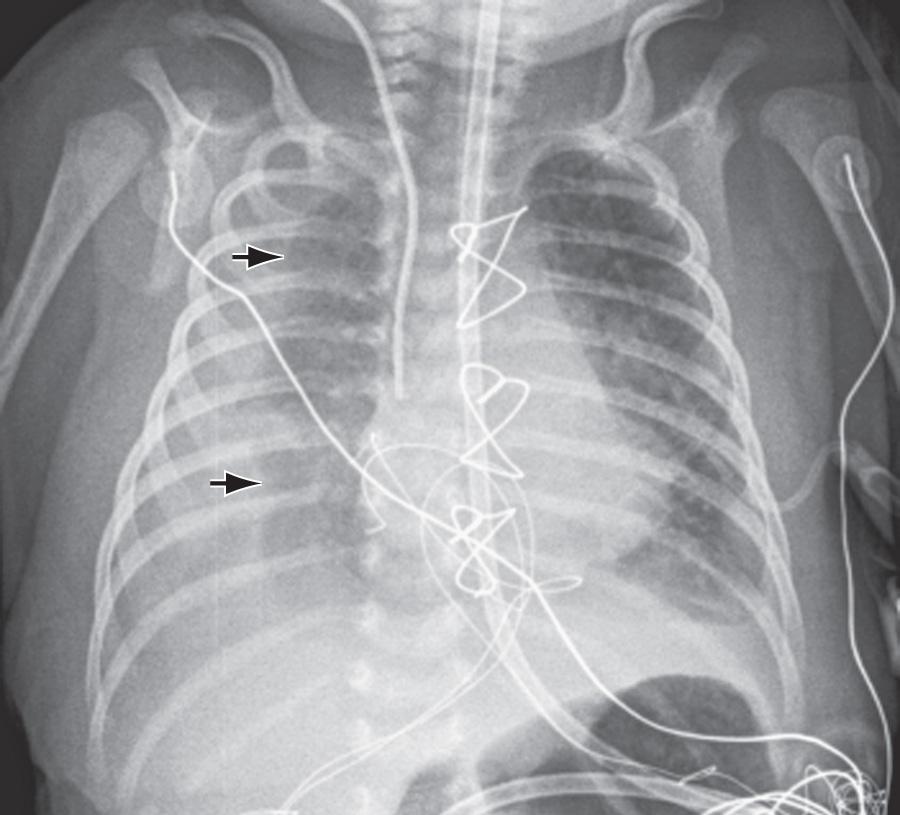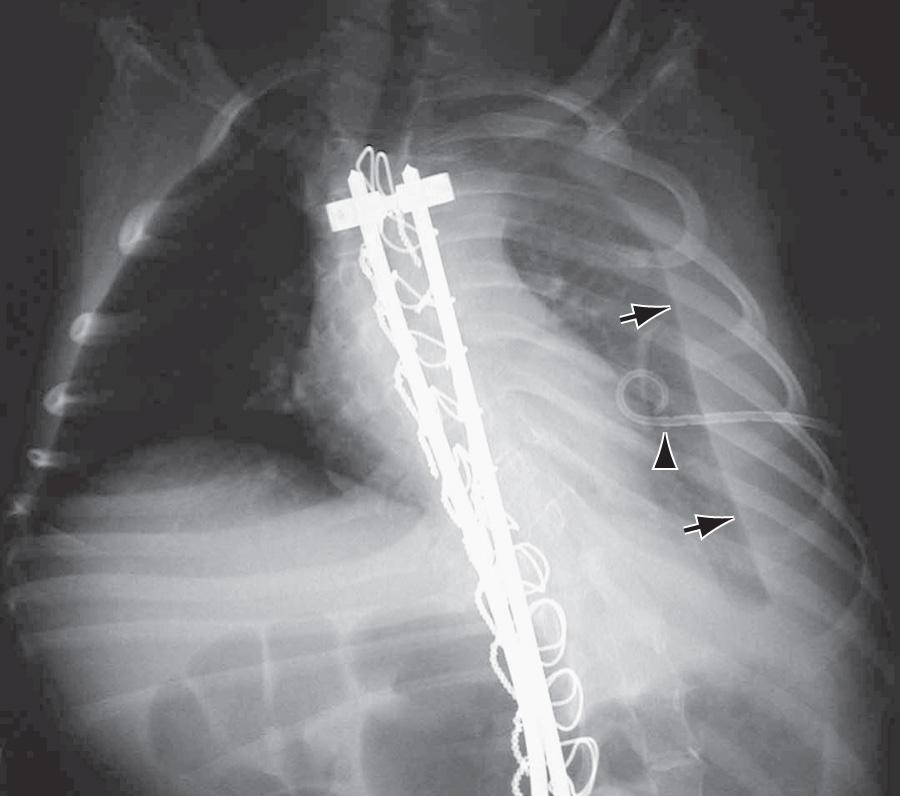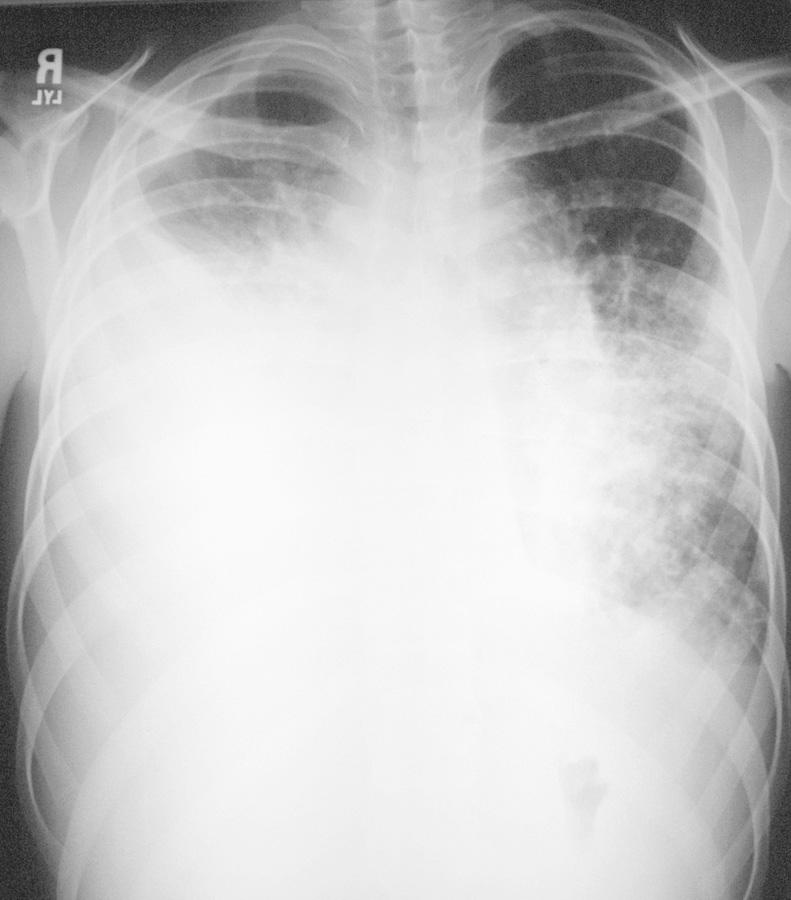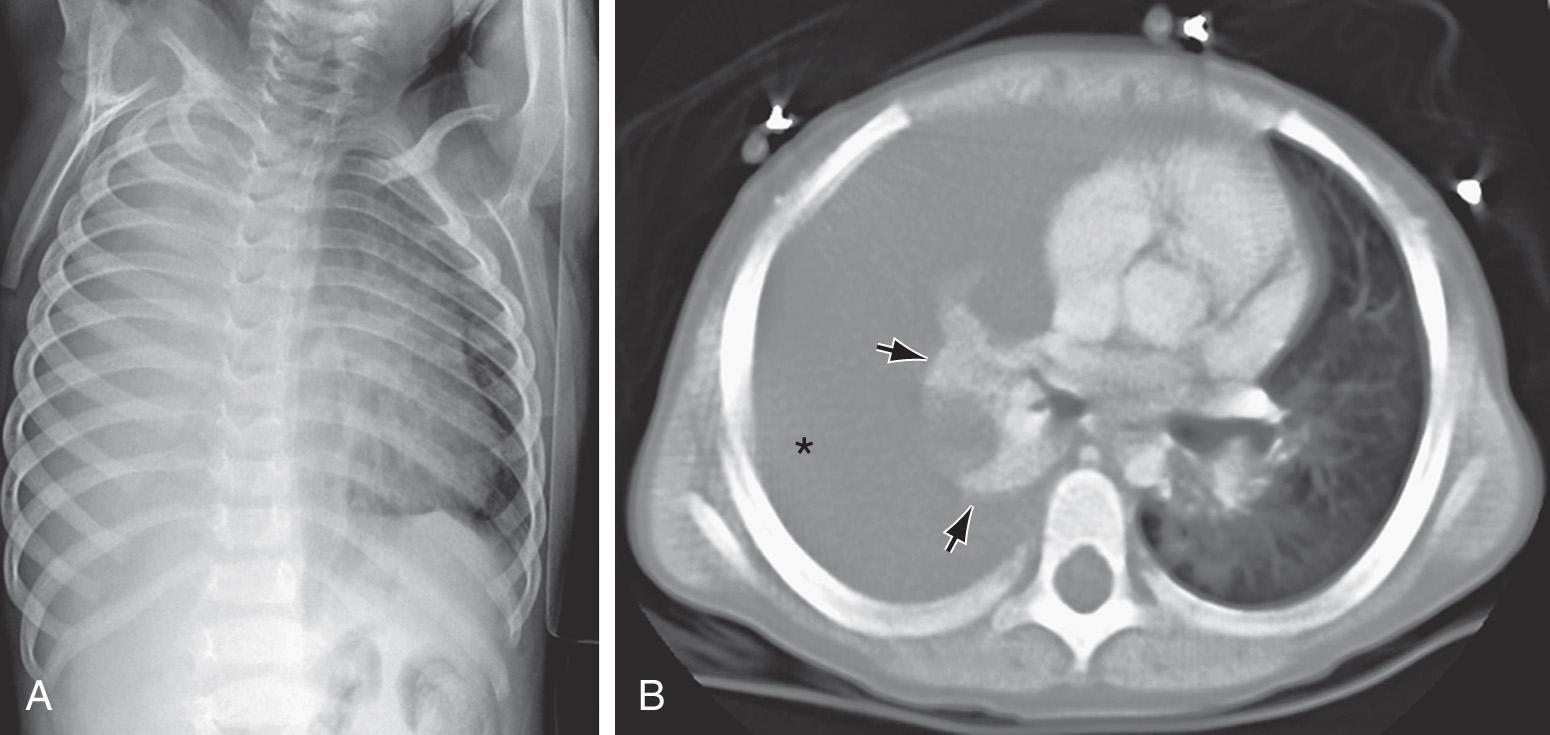Physical Address
304 North Cardinal St.
Dorchester Center, MA 02124
Chylothorax is a pleural collection of fluid formed by the escape of chyle from the thoracic duct or lymphatics into the thoracic cavity.
Chylothorax in children occurs most frequently because of thoracic duct injury as a complication of cardiothoracic surgery (post Fontan surgery) ( Fig. 443.1 ). Other cases are associated with chest injury ( Fig. 443.2 ), extracorporeal membrane oxygenation, or with primary or metastatic intrathoracic malignancy, particularly lymphoma. In newborns, rapidly increased venous pressure during delivery may lead to thoracic duct rupture. Chylothorax has also been associated with Down syndrome, Noonan syndrome, and Turner syndrome. Less common causes include lymphangiomatosis ( Fig. 443.3 ); restrictive pulmonary diseases; thrombosis of the duct, superior vena cava, or subclavian vein; tuberculosis or histoplasmosis; and congenital anomalies of the lymphatic system ( Fig. 443.4 ). Refractory chylothorax in the fetus has been associated with a missense mutation in integrin α 9 β1 gene. Chylothorax can occur in trauma and child abuse (see Chapter 16 ). It is important to establish the etiology because treatment varies with the cause. In some patients no specific cause is identified.




Become a Clinical Tree membership for Full access and enjoy Unlimited articles
If you are a member. Log in here